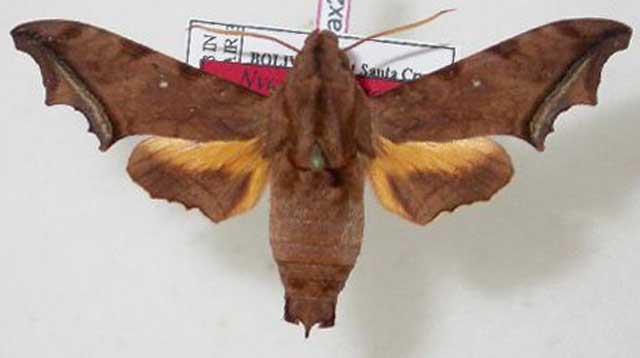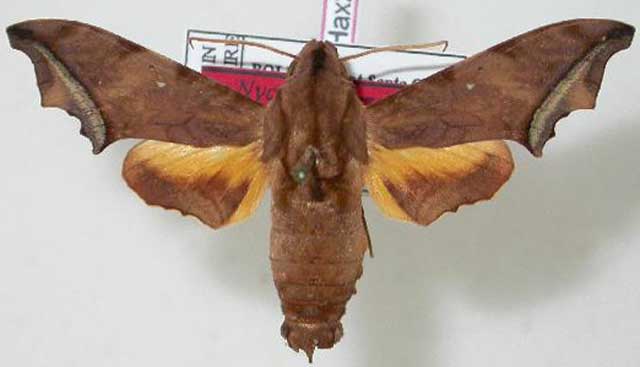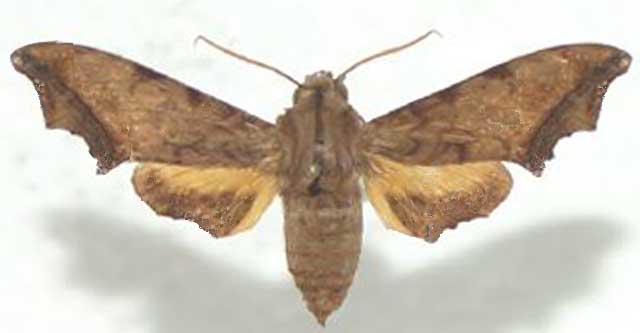Nyceryx janzeni
Nyceryx janzeni
Haxaire, 2005

Nyceryx janzeni, 59m, Santa Cruz, Bolivia, courtesy/copyright of Jean Haxaire.
This site has been created by Bill Oehlke.
Comments, suggestions and/or additional information are welcomed by Bill.
TAXONOMY:
Family: Sphingidae, Latreille, 1802
Subfamily: Macroglossinae, Harris, 1839
Tribe: Dilophonotini, Burmeister, 1878
Genus: Nyceryx Boisduval, [1875] ...........
Species: janzeni Haxaire, 2005
|
DISTRIBUTION:
Nyceryx janzeni
(wingspan: 50-60mm // forewing length = 25mm) flies in open and forested areas in
Bolivia: Santa Cruz: trail from Okinawa (243m) to Trinidad (261m) (HT);
Brazil: Amazonas: Tres Casas: Rio Madeira;
Colombia: Putamayo;
Ecuador: Napo: Coca and Rio Napo, 850m. Coca is the capitol of Orellana, suggesting a location further to the east.
This is "a very distinctive species with its straight submarginal white band on the forewing." Mielke & Haxaire
It is probably most similar to Nyceryx stuarti which is darkere and lacks the almost continuous, this white band.

Nyceryx janzeni, 57m, Santa Cruz, Bolivia, courtesy/copyright of Jean Haxaire.

Nyceryx janzeni, Purtamayo, Colombia, courtesy/copyright of Toms Melichar,
significant digital repair by Bill Oehlke, obscuring fw celll mark.
FLIGHT TIMES:
Moths are probably on the wing in just about every month with confirmed reports for June - July and September.
ECLOSION:
Adults eclose, usually within three to five weeks from pupation date.
SCENTING AND MATING:
Females call in the males with a pheromone released from a gland at the tip of the abdomen.
Females are active just after midnight with males beginning night flight around 1:00 am.
EGGS, LARVAE, PUPAE:
Larvae possibly feed on Pentagonia donnell-smithii, and Chimarrhis parviflora, but neither food plant has been
confirmed. Inga species should also be explored.
Isuspect the species name, janzeni, is honourific for Daniel H. Janzen, but I have no confirmation of that.
Return to Sphingidae Index
Return to Dilophonotini Tribe
Goto South American Index



